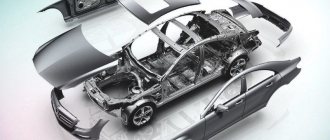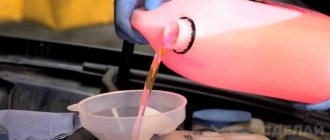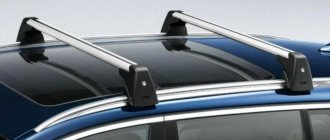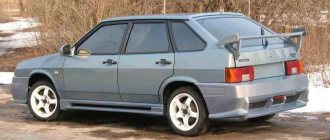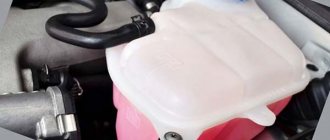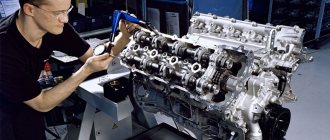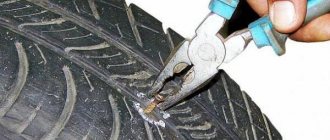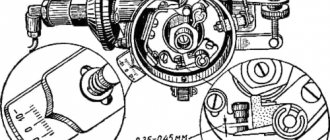Ever since cars appeared on city streets, people began to look for an opportunity to improve, decorate, and make them a reflection of their personality. Today, car tuning can be divided into three main areas:
- Facade styling . The most widespread, popular and diverse direction. Airbrushing, car vinyl, painting, changing bumpers - today the possibilities for tuning the appearance of a vehicle are almost limitless. The number of tuning styles is just as diverse.
- Interior tuning . The car owner is forced to spend a lot of time inside his car. It is very important that the interior decoration of the cabin is as comfortable as possible, and, more importantly, pleasing to the eye. Reupholstering seats, changing the side panel, tuning the steering wheel - there are no less opportunities for modifications here.
- Tuning technical characteristics . When people talk about tuning, they often forget that the main purpose of tuning is to improve the car. Being carried away by styling, many forget about its technical characteristics. Tuning in this case involves improving the quality of the mechanisms of your vehicle.
JDM Style
Toyota Soarer Z10
Translated, this abbreviation means “home Japanese market.” Tuning within this direction involves modifying the technical characteristics of the vehicle, giving it the appearance of a classic Japanese car: low seating, wide wheels, right-hand drive, etc. The most common modifications within this style include:
- Engine change
- Manual Transmission
- Classic Japanese wheels
- Negative camber
- White, poisonous yellow or scarlet headlights
- Wide body kit , giving the car body the most predatory look.
- Color palette: non-standard poisonous colors (purple, fuchsia, light green, etc.). White and yellow cars are also held in high esteem.
- Colored wheels . Only the most ardent fans of old-school Japanese style resort to this type of tuning. In this case, it is planned to paint the wheels in the corporate color of some recognizable and respected brand in Japan.
- Carbon . In the design of Japanese cars, carbon is considered a kind of trademark, so within the framework of JDM Style it is planned to use this material to the maximum. First of all, the metal hood is changed to carbon fiber
- Old school design. The trend originated in the Land of the Rising Sun in the 1980s of the twentieth century, so tuning old Japanese cars from the 1970s-1980s is considered especially chic. It is believed that classic JDM tuning can only be found on a car produced in the 20th century.
- Stickers, sticker bombing , use of brands popular in Japan. If at the end of the 20th century it was customary to sculpt stickers on places of cracks and scratches on the body, then in the 21st century sticker bombing has turned into a whole style, which is often used in JDM tuning. The stickers usually feature Japanese flags or declare their love for this type of tuning.
Kinds
There are various types of tuning for cars, regardless of their price category or initial technical characteristics. Each car owner will decide for himself what type of modification to choose.
You need to understand what the car lacks in its current state, and what legal, safe methods these shortcomings can be compensated for.
Traditionally, tuning is divided into several categories, depending on what goals are being pursued. If these are external changes to the body, then we are talking about external tuning. Interior adjustments are considered internal tuning, and any changes in technical terms are already classified as technical tuning.
But any classification is quite conditional, since one element can perform several functions simultaneously. Body kits and wings provide superior visual impact, but also provide better downforce. By installing a winch on an off-road vehicle, the appearance of the vehicle also changes, but such work is considered a technical modification.
We can highlight several of the most common and popular trends in tuning. They concern:
- audio systems;
- interior;
- motor;
- body;
- pendants;
- wheels
Plus, we will separately consider several of the most unique and unusual destinations that are in demand among certain groups of car enthusiasts.
When making any modifications to cars, remember safety and the law. Very often, motorists do things that are contrary to the law and pose a direct threat to the driver himself, as well as other road users. Before upgrading your car using this or that tuning, think about the consequences.
Audio systems
Installing a new audio system that replaces the standard radio is already considered tuning. Only it can be completely different, depending on how much the capabilities of the vehicle’s multimedia system change.
Audio tuning involves installing and replacing components such as:
- subwoofers;
- amplifiers;
- columns;
- color and music complexes;
- speakers;
- monitors;
- computers;
- video equipment, etc.
A large number of motorists are pursuing the goal of creating a real multimedia entertainment center from their standard iron horse.
For this purpose, the audio system is completely changed, monitors are installed in the ceiling or headrests, an amplifier with a subwoofer is located in the trunk, and much more.
Audio tuning is a popular trend in the world of car modifications. There are even special competitions and exhibitions where car owners demonstrate the capabilities of their audio systems.
Hot Rod
If JDM involves tuning an old-school Japanese car, then Hot Rod involves modifying classic American retro cars . The history of the Hot Rod style dates back to the distant 1930s. During the troubled times of the Great Depression, Californian youth began organizing illegal races in tuned two-seater cars. These machines were modified thanks to valuable finds found in various junkyards. These roadsters often had all removable body parts removed to reduce the weight of the racing car.
If the term Hot Rod originally meant a racing-tuned roadster (a two-seater retro car from the 1930s), over time the term came to be used to define an entire style, way of life and thought. In the 19540-50s, Hot Rod gained particular popularity and soon split into two movements. The classic Hot Rod style involved tuning the car by replacing original auto parts, while the Street Rod allowed for the possibility of replacing old, but original parts with new ones.
Custom
Customization was born out of the gradually growing interest in Hot Rod. Translated from English, the word “custom” means “made to order,” but there is a deliberate mistake in the name of the term, emphasizing the general “wrong” message that Custom Culture carries. The founder of this trend was an ardent supporter of the Hot Rod , George Barris, who founded the Kustoms Car Club magazine in the 1950s.
The style itself originated in Sunny California, but gradually began to gain popularity throughout the country. As the name suggests, this style did not have any clear boundaries. It was based on an old-school American car and modified to your heart's content.
The goal of tuning was no longer to turn a cheap vehicle into a racing car, but simply to create an exclusive work of art on wheels.
The Kustom style put itself in opposition to the “dominance of factory consumer goods.” Most of all, this style was loved by residents of San Francisco, who are known for their hatred of corporations. The characteristic features of the style include the following:
- Particular attention to car rims
- Unusual colors, a large number of chrome parts
- Low landing
Gradually Kustom split into several directions, the main of which were:
- Muscle car . Cars produced in the USA between the 1960s and 1980s. In this style, the body remains unchanged, or simple airbrushing is applied (usually classic flames). All attention is focused on engine modification. Ideally: the most powerful engine visible to everyone around. It is considered especially chic to paint the visible parts of the engine in a color contrasting with the body.
- Cal Look . As the name suggests, these are cars tuned in classic California style. For tuning, only Volkswagens from the 1960s are used, which are modified to resemble a racing car. Classic body color: red.
- Lowriders . The main difference between these cars was the lowest possible landing of the car. Distinctive features also include gold plating, which was often used in interior styling; velor seats; hydraulic suspension .
By the way, it was the fashion for lowriders that caused the invention of hydraulic struts. Due to the constant accidents that occurred with artificially low cars, a law was passed in the United States regulating the amount of ground clearance. Thus, many extremely low cars were illegal.
And that’s when hydraulic struts were invented to adjust the ride height. Hydraulic suspension subsequently became a trademark of this direction. The Jamaicans from the GTA series of games preferred lowriders.
Technical version of car tuning
Perhaps this is the largest area, there is a large field of activity here, if you break it down into subgroups, you get:
Tuning the power unit (engine)
Needless to say, all popular “tuners” start with it. Because even a schoolchild with basic knowledge of physics can increase power. For example, by installing a zero-resistance air filter , the power will increase, albeit not by much, but still. However, if we approach this issue more seriously, then there is an almost limitless scope of work, it all starts with boring the engine block - we increase the volume, and, accordingly, the power. Next is the installation of turbines; lightweight pistons, connecting rods, crankshaft; some even lighten the flywheel; after that comes the exhaust gas system - the catalyst is removed, a spider-type muffler is installed, now a valve system without springs appears, etc. If you set a goal, you can increase the power two or even three times!
Electronic tuning (or chip firmware)
Some owners are the first to do chip tuning and say that they have changed the characteristics of the engine, but this is not entirely true, but the engine will work differently, receive more fuel or air - but this is not a change in engine parameters, but simply electronic tuning software that controls many fuel and air injection functions. Accordingly, on cars that do not have electronics, say on old carburetor VAZs, such tuning will not work, there is simply nothing to flash!
Gearbox tuning
Some people don’t even know that there is also somewhere to go for a walk. Nowadays, modernization of transmissions is widespread, especially on our PRIORs and other VAZs. The main direction is modernization or modification of standard shafts, gears - they are installed with a different number of teeth, and also installed with enhanced characteristics, other metals, etc.
The main purpose is to increase gears, for example, instead of 4 steps, you can insert 5. And also change the acceleration dynamics. But with increased acceleration, we seem to “take away” traction, that is, it will be difficult for such a car to pull a trailer or motorhome (however, in 95% of cases this is not necessary).
Suspension tuning
It must be said that now there are two main directions: - off-road and sports, and the suspension changes categorically. You cannot combine two directions at once in one - it is practically impossible.
If for off-road performances, it is strengthened, the ground clearance is raised, heavy and massive parts are installed, “mud” wheels are the main focus of the fight against dirt and potholes, and don’t care about speed, the main thing is to get through.
For high-speed performances, the opposite is true - the cars are lowered, the suspension is lightened, etc.
You must know exactly what you need and why, then customize the suspension for yourself!
As you can see, the technical possibilities are endless, the main thing is to have a clear task. Let's talk about other elements.
DUB
This style originated in the poor neighborhoods of America. At the very beginning of hip-hop, the first rappers (Ice-T, Ice Cube Eazy E, etc.) were the first to modify their cars. Such a car had to stand out against the background of the garbage and poverty of the ghetto. Often the car itself was just “garbage” for styling, but they tuned it to perfection.
The basis of the style: low suspension, huge wheels, tinted windows (and don’t care that in America tinting is prohibited in almost all states), and most importantly: a lot of shiny chrome parts . Special chic: a folding roof, flying doors and airbrushing. Everything the blacks like (there is no one else at DUB exhibitions except them).
Covers and interior reupholstery.
Currently, there is a wide variety of different cases, so you can always choose the most optimal options. If you don’t want to tighten the seats into covers, then you can use interior reupholstery, which changes the upholstery not only of the seats, but also on almost all surfaces of the cabin, including the door and ceiling upholstery.
DONK
Funny, ridiculous and surprisingly cool style, the main distinguishing feature of which is the absurdly huge wheels. The style appeared relatively recently: in the early 2000s. And naturally, the American ghetto became its birthplace. Those who managed to escape poverty did their best to emphasize their well-being. That's how Donk was born. Its characteristic features are as follows:
- Giant wheels and very expensive rims
- Chrome-plated, or better yet, gold-plated parts
- Bright colors and airbrushing
- A very expensive and visible audio system to everyone around
- All visible parts of the chassis painted in contrasting colors
- Bright and expensive upholstery. Expensive natural furs, gilding, etc. are often used for upholstery.
Drift
As the name suggests, this style of tuning involves creating a car for drifting on asphalt surfaces. The trend originated in Japan, but has become popular all over the world. The main distinguishing feature is the rear-wheel drive of the car, a powerful engine tuned for driving at high speeds and the most durable and reliable tires with a hard compound.
In addition, the chassis prepared for drifting is provided with the largest possible wheel rotation angle - in order to effectively “give angles” when driving in the countersteering phase. Equally important is adjusting the stiffness of the suspension and its geometry - in particular, be sure to change the Ackermann angle from positive to negative.
Popular tuning styles
An example of a hot rod style car
Such types of tuning as hot rod, lowrider, VIP style, drag racing have not gained mass popularity in Russia. Russian car enthusiasts do not convert antique cars to a powerful modern engine (hot rod).
An example of a lowrider tuning style
The lowrider, in which the hydraulic suspension allows a production car to jump, rear up, and overcome unusual obstacles, has not gained popularity.
An example of Japanese VIP style
The Japanese VIP style in Russia has acquired national characteristics, but excessive luxury of external and internal decoration is also rarely used in tuning.
An example of car tuning for drag racing
The exception is drag racing, which is enjoyed by wealthy young people in big cities. Races in specially converted sports cars over a four-hundred-meter distance take place at night.
They record Russian records (6.325 seconds), which still lag behind the achievements of Western professionals (4.428 seconds). For competitions, cars are prepared by boosting the engine or installing motors from sports cars.
Drag
Everything here is as simple as with drifting. Drag style involves creating a car for drag racing - racing against the clock in a straight line (short distance 402 meters). The appearance of the car practically does not matter here, but the lightest and most rigid body structure and the crazy torque of the engine, which rears up and turns the car diagonally at the start, are simply necessary.
Of course, for drag racing it is also important to select the gear ratios in the box in such a way as to provide maximum torque throughout the entire movement during this short, 30-40 second race, because this is what is important during acceleration. After such a race, the engine is sent for replacement.
Is it worth doing tuning?
If you don’t cross acceptable boundaries, then definitely yes. True, here you need to stop in time, and sometimes you don’t even need to start. For example, there is no point in dressing up a rotten car body, putting spoilers on it, etc. The first thing you need to do here is welding and straightening, as well as painting. After that we can talk about the body kit.
Another thing is that lack of knowledge in a particular area can lead to serious consequences or even death on the road. After all, many people do not increase the amount of horsepower in order to drive along the highway at a speed of 80 kilometers per hour. And any “jamb” in the engine can lead to a serious accident. Therefore, if you don’t know, it’s better to entrust the matter to professionals. It makes no difference to them whether they are tuning a Nissan or a Mazda - the specialists know their job and will do everything right. But you will have to pay well for this. For an ordinary motorist, minimal modifications are enough, which practically do not concern the technical component.
W.R.C.
Cars that are as similar as possible to those that participate in the rally. Moreover, only external similarity is often observed, such as wheel arch trims, authentic vinyl colors, headlight chandeliers, and a protective frame for the interior. But true fans of style also customize the technical characteristics of a classic rally car. Naturally, manufacturers that participate or have previously participated in the WRC are subject to this tuning: Subaru, Mitsubishi, Ford, Peugeot.
DIY car tuning
Many people think that in order to have some spectacular design on their car, they must definitely go to a special salon. But this is not necessary, especially since tuning prices can be quite high. Drawing on just one part in Moscow costs from twenty thousand. However, you can easily do a lot yourself.
For airbrushing, special stencils are used to create proportions. More subtle moments, such as shadows, gradations of light, reflections are completed separately. If small errors are obtained when applying the design, they are corrected by varnishing.
Often, when carrying out external tuning, the thresholds are changed. This is very easy to implement, since there is no need to drill the body. The thresholds are simply attached to the standard places with screws that are included in the kit. In order not to make a mistake in choosing thresholds, you need to pay attention to the reputation of the company when purchasing, as well as the material from which they are made. Fiberglass is unlikely to be suitable for our roads. But ABS plastic and especially metal thresholds will be an excellent reliable option, although the latter requires care, since metal is susceptible to rust. A separate topic included in car tuning is additional lighting. And we're not just talking about wheel rims here. The light coming from under the bottom of the car looks interesting. But they are also sometimes supplied with a radiator, headlights and some body parts. Light makes the car truly unique and extremely expressive. For such illumination, light-conducting cables, various lamps or neon are used. The last option is the easiest to install.
To decorate wheel rims, it is convenient to buy ready-made kits, which include current stabilizers. You will also need corrugation, wire, ties for fastenings, sealant, and, of course, a jack with heads for unscrewing the bolts. After dismantling the wheel, the diode strip is wound onto a previously degreased casing, cut and secured with sealant. Then a wire is connected to it, this place is insulated and all the wiring is placed in a corrugated pipe. The wiring is connected to the stabilizer.
To tune headlights, in addition to LED backlighting, tinting of the light emitter is used. In this case, you will need to purchase a colorless sealant, an RGB LED strip, gloves, napkins and a solution for headlights. The first step is to remove them from the body, disassemble them, then attach a tape using sealant and connect them to the car's wiring.
At the end, the lantern is glued together, left for a day, after which it can be inserted into the body of the car.
You can simply tint the headlights. A special paint is used for this. It is better to preheat the can for several minutes by applying it to the battery or placing it in warm water. Spraying occurs quickly, at a distance of thirty centimeters. Apply one layer, and after it dries, apply a second one, according to the instructions.
Very often, such modifications can be found on domestic cars, such as Lada. Tuning turns inexpensive models into unique and sometimes funny cars.
DTM
The main goal: to make a car for DTM racing, which means homologation of the car under the existing regulations. The direction was revived in the early 2000s. German automakers take part in this touring car championship - Audi, Mercedes, BMW, Opel.
The cars technically have little in common with the road version and are similar only in appearance; in general, we can only talk about tuning here conditionally. So in a car for DTM, the units are placed on a space frame, the body elements are made anew, the center of gravity is located as low as possible and is close to the center of the axles. Front engine, rear wheel drive, mandatory rear wing.
What is car tuning and why is it needed?
Contrary to the popular belief that auto tuning as a phenomenon appeared relatively recently, the first work in this direction began at the beginning of the last century - almost immediately with the serial production of the first passenger cars. This is understandable, a car is not a cheap product and the first car owners sought to emphasize the individuality of their car.
In this regard, little has changed over the past century - it is the desire for individuality that pushes car enthusiasts to change the external and internal appearance of the car and its technical (mostly functional) characteristics.
And if just recently car tuning was the lot of a young audience, now it is increasingly shifting towards sensible middle age. After all, optimization of car maintenance costs may be a consequence of additional changes in the factory design or changes in engine control programs aimed at optimizing the car’s characteristics. For example, measures aimed at reducing fuel consumption in certain driving modes.
Tuning may also involve a significant expansion of the capabilities of factory car models, associated not with a sharp increase in engine power and acceleration dynamics, but with improved cross-country ability, duplication of vital systems, and increased survivability in hard-to-reach and sparsely populated areas.
For certain groups of car owners, the unique appearance and unique interior decoration of a car, even if it is very expensive as standard, is fundamentally important. Others are interested in turning the car into an infotainment center, stuffed with audio and video equipment.
So in its most general form, tuning is any activity related to changing the design, design and/or standard settings, adjustments or software of production cars.
Ratlook
Translated from English, the term translates as “the appearance of a rat.” Rust is stylish. This is how this type of tuning can be briefly described. Seeing a car like this, you might think it was just brought straight from a junkyard. In reality, such a machine can cost tens of thousands of dollars. Appearance is not the main thing here; what’s under the hood of such a retro car is much more important. The essence of this tuning is to redo everything in the car except the body, which remains unchanged, with all the “original” dents.
Body corrosion and peeling paint in places are a trademark of the style. Some fans of such tuning deliberately damage the body of the car so that the car makes an even more shocking impression.
This style was started by auto mechanic Jim Jacobs, who decided to surprise the public with an old car at the 1987 auto show. The body of his antediluvian Ford was absolutely rusty. The conditions of the competition required that the car be painted. Jacobs solved this problem simply: he began painting his creation right during the exhibition. Naturally, he became the star of that show.
Internal improvements
This type of modification refers to the decoration inside the car. Tuning the interior includes replacing the front panel, installing a sports steering wheel and seats, covering the seats and interior with leatherette or genuine leather, adding a variety of shelves and even a pull-out table, which is perfect for those who like long trips.
Interior tuning also includes installation of an audio system, monitors, sound insulation, alarm and various systems, including anti-theft. To achieve 100% uniqueness, some car owners even install neon and LED strips here. All this primarily serves for the convenience of being in the car.
However, for sports style lovers, the internal tuning will be completely different. To enhance practicality behind the wheel, in this case we are ready to part with comfort. Improvements will be aimed at achieving similarity with a sports car. And they may sometimes not even have upholstery on the passenger seats. But numerous sensors and buttons on the front panel, as well as seat belts, will demonstrate the driver’s desire to achieve maximum power of the car, as well as the ability to perfectly control his iron friend.
In addition, the absence of seats or simply covering them does not at all indicate neglect of passengers. No. Such modifications are aimed at reducing the weight of the machine, thereby improving mechanical performance. And the pipes, sometimes located right in the cabin, which cause at least bewilderment for the average person, are actually a safety cage designed to strengthen the body and protect the life of the pilot if an accident occurs on the highway.
WOODY
A very dubious type of car modification, involving the maximum number of wooden parts. The goal in this case: an all-wood car. The ideal, of course, is unattainable, but getting closer to it is considered a special chic.
Almost mandatory: wooden doors and a natural wood interior; in all other respects, the car owner is given room for creativity. Undoubtedly, wood in the design of the interior and body of retro cars of the 1920s-1930s looks organic, but on modern cars such tuning looks “freaky”.
Airbrush.
Today this is one of the fashionable trends that allows you to make your vehicle as unique as possible. There is even an opinion that due to the visibility of a car with airbrushing, it will never be stolen. Airbrushing is a complex technique of applying a design to the surface of a car. Most often the object becomes the hood and side surface.
Fitment
This term is commonly used among auto mechanics to refer to the location of the wheels relative to the body. There are more than a dozen different standard wheel positions. The essence of this style of tuning is to modify the standard position of the wheels. negative camber is used within this style .
Bumper
The front bumper is extremely important to reduce air resistance. In its design, the most important thing is the bottom edge - it should extend as far forward as possible and go as low to the ground as possible. It would be good if it was possible to test it in a wind tunnel first.
Why is it undesirable for air to penetrate under the bottom of the car? The fact is that the air masses that fall under the bottom of the body swirl and fill the rarefied space behind the car. Unfortunately, this takes a fairly large amount of energy from the car, and the high pressure that the air creates reduces downforce. This has a very negative effect on the driving characteristics of the car. By the way, the effect produced by the air escaping from under the car is clearly visible in the fall, when fallen leaves fly out from under the cars. For the same reason, powerful cars with low ground clearance, driving at high speed, sometimes even pull out heavy manhole covers.
Bosozoku
Japanese tuning style, born among bikers of the 1950-1960s. A little later it turned into a whole subculture. Moreover, each gang brought something of its own to this style.
The most characteristic features of this tuning include: minimal ground clearance, negative camber. In the classic version, it must be an old-school Japanese retro car, but a little later a branch of the style called VIP appeared, which involved tuning new Japanese cars.
Chop top
The main distinguishing feature of this style is the cut-off, or in other words, “lowered” roof of the car. If Japan has become famous for its love of low-slung vehicles, then in America, on the contrary, they dearly love low roofs.
As part of this trend, the roof of the car is usually artificially lowered and the pillars are cut. At one time it was considered a variation of Hot Rod, but then it became an independent style.
Minuses
The very first disadvantage that comes to mind is the financial component, just imagine how much it costs - say, boosting the engine of a prestigious foreign car? If you don’t have money, then it’s better not to meddle.
Secondly, incorrectly configured units cause irreparable technical damage, which can lead to injury or even death to the driver.
Third, many external changes to the car are punishable by law, for example, tinting (in the wrong places), “non-factory” xenon, direct-flow muffler. You'll just end up with fines.
I will say this - if you want to drive a car every day (and not from competition to competition), then try to change it within acceptable limits, at least purely visually, so that the traffic police officers are not attracted to your car.
Hello Kitty
It's not hard to guess that this crazy pink style originated in Japan. There is probably no person in the world who has never seen a Japanese cat with a red bow, which has become a kind of symbol of Japanese popular culture. In this style of tuning, special attention is paid to the facade of the car and the interior decoration.
The main distinctive feature of the style: an explosion of pink color. Ideally, absolutely everything in the car should be pink or white. Faux fur covers, fluffy steering wheel covers are very often used, and the image of the famous cat is usually painted on the body. You might think that girls gravitate towards this style, but in fact it is considered especially chic when a man of an exaggeratedly brutal appearance sits behind the wheel of such a car.
Details about the stages of car tuning
Well guys, I’ve already mentioned a little about car tuning options, but now I would like to structure them all, all three types:
1) Technical – changes to standard components and assemblies
2) Internal – improving the car interior
3) External – installation of additional external parts, or changing them
Probably many people are now thinking, what can be technically changed in the car? Guys, there’s really a lot of things, so we’ll look at each point separately.
Demon Camber
This style has another name: “Onii-kyan”. Translated from Japanese, the term means “devilish collapse.” It’s not hard to guess that the main (and only) feature of the style: the maximum and absurdly negative camber of the wheels. The same feature is typical for most tuning styles in Japan, so “Onii-kyan” is not always distinguished as a separate style.
Summarizing
The article allows you to learn about what tuning is and what types there are, its varieties that you can do on your own. No matter how many doubt their ability to perform tuning, in reality everything is not so scary. You just need to practice and every time it will turn out better and better. Tuning can significantly improve the appearance of the car, its technical characteristics and data. There is an opinion that no has betrayed perfection. Only by devoting their time to their car, many will be able to express their opinion on this matter.
Don't be afraid to try your hand at tuning, there's nothing complicated about it. As you do it, the work will get better and better each time. All you have to do is follow the instructions carefully.
Raggare
The birthplace of this trend is not America, or even Japan, but Sweden. Back in the 1970s, another energy crisis broke out in the States, thanks to which a frantic stream of old American cars, absurdly large for European streets, poured into distant Scandinavian countries.
Most of them were in pretty bad condition, but they were worth mere pennies. Young people who consider themselves part of the punk rock culture or call themselves Raggare began to buy them. Since then, this frankly “trash” direction of car tuning has gradually begun to develop, which is still very popular in Europe.
Cheap (useless tuning)
We recently talked about stupid, from our point of view, tuning. After all, a car is not a Christmas tree, and therefore, for example, it definitely doesn’t need a flexible glowing cable to plug cracks in the cabin.
Beautiful? Cool? Essentially these are the same notorious blue light bulbs in light fixtures and washer nozzles. Only more expensive ones...
Beautiful? Cool? Essentially these are the same notorious blue light bulbs in light fixtures and washer nozzles. Only more expensive ones...
This also includes huge flavors on the front panel, luminous caps on the wheels, sport-style stickers that interfere with normal visibility, rear wings and other spoilers, alien cheap mascot figures on the hood and, unfortunately, much more. Drivers of such cars are unlikely to realize how bad it all looks.
You can argue for a long time about the difference between a wing and a spoiler. But now we are talking about tuning. Specifically, about the stupid and even funny. Does the owner really believe that his car has acquired some new qualities with this cover? |
And the native deer looked much more impressive... |
Unfortunately, in most cases, the result of tuning is disappointing - if not the owner, then those around him. By the way, selling a “sophisticated” car is usually much more difficult than an ordinary “Cinderella”: the owner remembers very well the money spent and, of course, wants to compensate for the losses. And the buyer, as a rule, does not care about this...
We invite everyone who is ready to give examples of obviously useful car tuning to share their thoughts.
Is there any useful tuning - ZR expertise
Sleeper cars
The most modest tuning in the world. Inconspicuous economy class cars, in which they install a powerful engine and improve their technical characteristics in every possible way. At the same time, the owners of these cars do not touch either the exterior or the interior. After all, the most important thing in a car is not how it looks, but how it drives. And these cars drive great. Of course, the whole idea is to make a surprise out of quiet family cars with a notoriously lackluster racing reputation, like Volvos.
Chip tuning
This item can be skipped by owners of cars with carburetor injection. This is due to the fact that the so-called “brains”, or control unit for the injection and ignition system, are absent there. Let's take the electronic tuning of the BMW X6 as an example. This is a rather expensive German SUV. But many drivers expected more from him. If the car is no longer under warranty, then you can do whatever you want with it, even chip tuning.
This is flashing or adjusting the electronic control unit. Essentially, this is a change in parameters such as the amount of fuel supplied, air, etc. Software settings are performed on special equipment with the presence of certain software. If you lack knowledge on this issue, it is better not to try to do it yourself, but to entrust it to specialists. Ultimately, such tuning of the BMW X6 can bring an additional 10-30 horsepower.
Dekotora
Bright, colorful, awkward and absolutely incredible styling of Japanese trucks. It is important to understand here that this is exactly the decoration of the transport. Dekotora does not require any major modifications. The most basic example: all kinds of key fobs that truckers attach to the windshield. Adherents of this style go much further: they use all kinds of household items, hang neon signs, New Year's lights, make a fur trim on the windshield, etc. There is only one principle here: the more fun and brighter, the better.
Add ProCrossovers to your favorites
Tuning and the law
Not everything that is included in car tuning is allowed by Russian rules. All significant vehicle upgrades must be registered with the traffic police.
Unusual cars are more often stopped on the roads and their documents are meticulously checked. Of course, you can change rims or install a sports steering wheel without permission. Dull tinting of the windshield and installation of blinding headlights are expressly prohibited.
Examples of prohibited and permitted car add-ons
Without permission, you cannot change parts of the car on which the serial number of the car is stamped (engine, Zhiguli shock absorber cup), or completely or partially repaint the body.
It should be noted that difficulties (with fines, even confiscation) arise mainly when making homemade modifications to a car without permission.
If you order tuning from a specialized studio, its specialists know how to obtain permission and legalize modifications.
